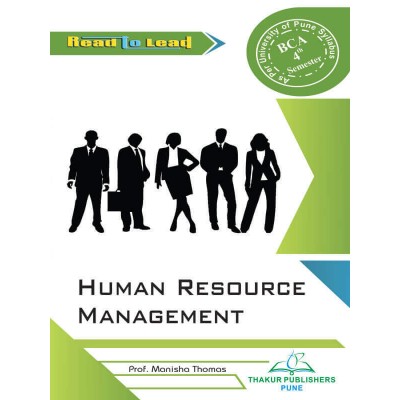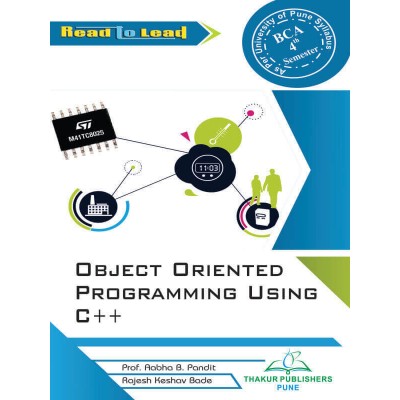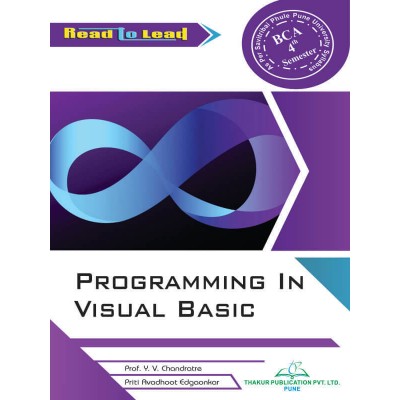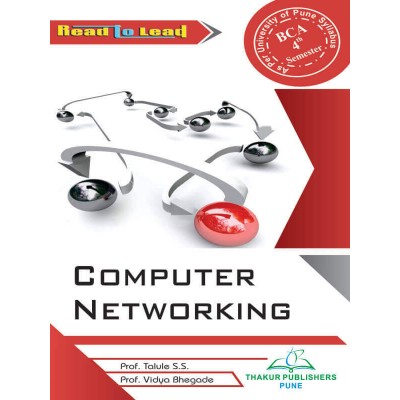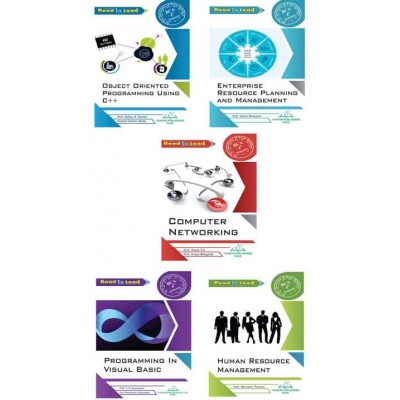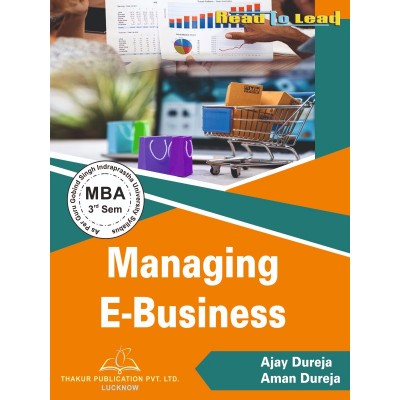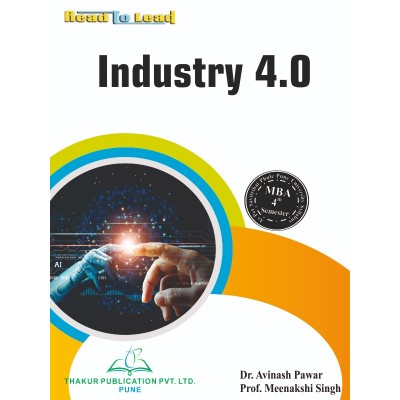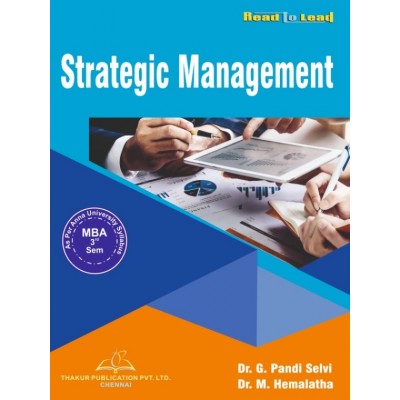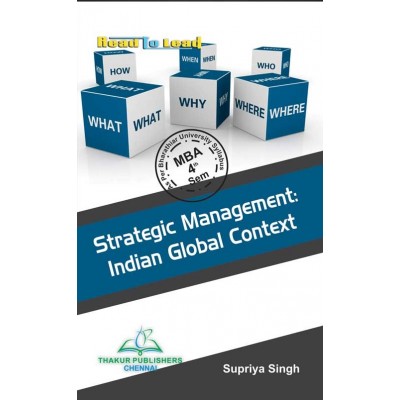Categories
- Pharmacy
-
Nursing
-
MBA
-
BBA
- U.P. State University
- Veer Bahadur Singh Purvanchal University, Jaunpur
- Chaudhary Charan Singh University, Meerut
- Dr. Bhimrao Ambedkar University, Agra
- Chhatrapati Shahu Ji Maharaj University, Kanpur
- Mahatma Jyotiba Phule Rohilkhand University, Bareilly
- Mahatma Gandhi Kashi Vidyapith, Varanasi
- Dr. Ram Manohar Lohia Avadh University, Ayodhya
- Deen Dayal Upadhyaya Gorakhpur University
- Prof. Rajendra Singh (Rajju Bhaiya) University, Prayagraj
-
BCA
- UP State Universities
- University of Pune
- I.K.Gujral Punjab Technical University (PTU)
- University of Rajasthan
- Rashtrasant Tukadoji Maharaj Nagpur University
- Uttar Pradesh NEP2020
- University of Rajasthan ,Jaipur (According to NEP-2020)
- BCCA (B. Com - Computer Science)
- Haryana
- West Bengal
- BBA (CA)
- PUNE BCA (Sci,Commerce)/B.Com (CA)
- Dr. A. P. J. Abdul Kalam Technical University, Lucknow ( AKTU )
- MCA
-
B Ed
- Lucknow University B.Ed Books
- Chaudhary Charan Singh University/Maa Shakambhari University, Saharanpur
- Dr Bhim Rao Ambedkar University, Agra
- Mahatma Gandhi Kashi Vidyapeeth, Varanasi
- Chhatrapati Shahu Ji Maharaj University
- Prof. Rajendra Singh (Rajju Bhaiya) University, Prayagraj (PRSU)
- Mahatma Jyotiba Phule Rohilkhand University(Mjpru), Bareilly
- Dr. Ram Manohar Lohia Avadh University, Ayodhya
- Bundelkhand University, Jhansi
- B.A,B.ed
- B.Sc, B.ed
- Deen Dayal Upadhyaya Gorakhpur University
- Veer Bahadur Purvanchal University (VBPU)
- Maharaja Suhel Dev State University ,Azamgarh (MSDSU)
- Raja Mahendra Pratap Singh State University, Aligarh (RMPSSU)
- Barkatullah Vishwavidyalaya (Bhopal)
- Jiwaji University (Gwalior)
- Vikram University (Ujjain)
- Dr. Harisingh Gour University (Sagar)
- Devi Ahilya Vishwavidyalaya (Indore)
- Rani Durgavati Vishwavidyalaya (Jabalpur)
- Awadhesh Pratap Singh University (Rewa)
- Maharaja Chhatrasal Bundelkhand University (Chhatarpur)
- D. EL. ED
- TET
-
B Com
-
B Sc
- B.Sc. U.P. State Universities Common Syllabus NEP
- Veer Bahadur Singh Purvanchal University, Jaunpur
- University of Lucknow
- Chaudhary Charan Singh University, Meerut
- Madhya Pradesh
- Chhatrapati Shahu Ji Maharaj University, Kanpur
- Dr. Bhimrao Ambedkar University, Agra
- Mahatma Gandhi Kashi Vidyapith, Varanasi
- DEEN DAYAL UPADHYAYA GORAKHPUR UNIVERSITY
- Prof. Rajendra Singh (Rajju Bhaiya) University, Prayagraj
- Dr. Ram Manohar Lohia Avadh University, Ayodhya
- Mahatma Jyotiba Phule Rohilkhand University, Bareilly
- Uttarakhand State Universities
- B.Sc. Bihar Universities Common Syllabus NEP
- University of Rajasthan (Jaipur)
- Haryana
-
Bachelor of Arts [B.A.]
- B.A. Of U.P. State Universities Common Syllabus NEP
- Veer Bahadur Singh Purvanchal University, Jaunpur
- University of Lucknow
- Chaudhary Charan Singh University, Meerut
- Chhatrapati Shahu Ji Maharaj University, Kanpur
- Dr. Bhimrao Ambedkar University, Agra
- Mahatma Gandhi Kashi Vidyapith, Varanasi
- Deen Dayal Upadhyaya Gorakhpur University
- Prof. Rajendra Singh (Rajju Bhaiya) University, Prayagraj
- Dr. Ram Manohar Lohia Avadh University, Ayodhya
- Mahatma Jyotiba Phule Rohilkhand University, Bareilly
- Madhya Pradesh
- Uttarakhand
- Bihar
- University of Rajasthan (Jaipur Syllabus as Per NEP2020)
- Haryana NEP-2020
- B Tech
- LLB
- SWA Education
Enterprise Resource Planning & Management
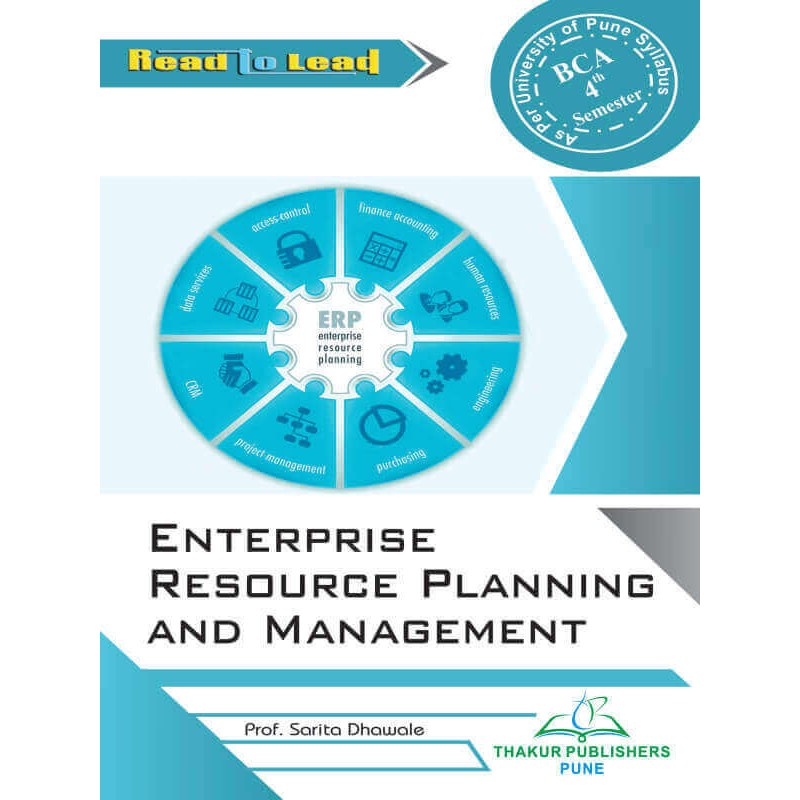
ISBN- 978-93-5163-329-7
AUTHOR- Prof. Sarita Dhawale
₹100.00
Tax excluded
Syllabus
(Course Code – 404)
Enterprise Resource Planning and Management
Unit-I: ERP: An Overview (4 Lectures)
1.1. What is ERP
1.2. Reasons for Growth Of ERP
1.3. Problem Areas in ERP Implementations
1.4. The Future of ERP
1.5. Characteristics and Features of ERP
1.6. Benefits of ERP
Unit-II: Enterprise Modeling and Integration for ERP (8 Lectures)
2.1. Enterprise-An Overview
2.2. What is Enterprise
2.3. Integrated Management Information
2.4. The Role of Enterprise
2.5. Business Modeling
2.6. Integrated Data Model
2.7. Role of Common/Shared Enterprise Database
2.8. Linkages of the Enterprise
2.8.1. Establishing Customer-Enterprise Link
2.8.2. Establishing Vendor-Enterprise Link
2.8.3. Establishing Links within the Enterprise
2.8.4. Establishing Links with Environment
2.9. Scope of Enterprise system
2.10. Generic Model of ERP System
2.11. Client/Server Architecture and Enterprise – Wide Computing
2.11.1. Characteristics of Client/Server Architecture
2.11.2. Different Components of ERP Client/Server Architecture
Unit-III: ERP and Related Technologies (8 Lectures)
3.1. BPR (Business Process Reengineering)
3.1.1. Definition
3.2. BPR –The Different Phases
3.3. Enterprise Redesign Principles
3.4. BPR and IT
3.5. Data Warehousing
3.6. Data Warehouse Components
3.7. Structure and Uses of Data Warehouse
3.8. Data Mining
3.9. What Is Data Mining
3.10. Data Mining Process
3.11. Advantages and Technologies Used in Data Mining
3.12. OLAP
3.13. Supply Chain Management
3.13.1. Definition
3.13.2. Stevan’s Model
3.13.3. Benefits
3.13.4. ERP vs. SCM
3.14. CRM
Unit-IV: ERP Implementation (8 Lectures)
4.1. Evolution
4.2. Evolution of ERP
4.3. Evolution of Packaged Software Solutions
4.4. The Obstacles in ERP implementation
4.5. ERP Implementation Lifecycle (Different Phases)
4.6. Implementation Methodology
4.7. ERP Implementation-The Hidden Costs
4.8. In-house Implementation-Pros and Cons
4.9. Vendors and role of vendors for ERP
4.10. Consultants and role of consultants for ERP
Unit-V: Technologies in ERP System (7 Lectures)
5.1. Introduction
5.2. Electronic Data Interchange(EDI)
5.2.1. Use of EDI
5.2.2. Evolution of EDI
5.2.3. Benefits of the EDI
5.2.4. EDI Standards
5.2.5. EDI Services
5.2.6. EDI Components
5.2.7. EDI Administration
5.3. IDoc Application
5.4. EDI Integration
5.5. ALE Integration
5.6. Internet Integration
5.7. OCR Integration
Unit-VI: The ERP Domain (7 Lectures)
6.1. Vendors in the ERP Market
6.2. SAP’s Markets
6.2.1. SAP Architecture and Integration
6.2.2. Scalability of SAP
6.2.3. SAP Business Structure
6.2.4. Common SAP Installation
6.2.5. SAP R/3 System
6.2.6. SAP Tools
6.3. Pepole Soft
6.4. Jd Edwards
6.5. Oracle
Unit-VII: ERP Present and Future (6 Lectures)
7.1. Limitations of ERP
7.2. EIA(Enterprise Integration Application)
7.3. EIA Products
7.4. Two Flavors of EIA and Messaging
7.5. ERP And E-Commerce
7.6. ERP and Internet.
7.7. Future Directions in ERP
Model Papers
SPPU2017/BCA/4/04
41 Items
New
5 other products in the same category:
Comments (0)
No customer reviews for the moment.
Your review appreciation cannot be sent
Report comment
Are you sure that you want to report this comment?
Report sent
Your report has been submitted and will be considered by a moderator.
Your report cannot be sent
Write your review
Review sent
Your comment has been submitted and will be available once approved by a moderator.
Your review cannot be sent
Customers who bought this product also bought:
Financial Management
Price
₹210.00
Buy Latest Financial Management Book for Mba 2nd Semester in English language specially designed for BU ( Bharathiar University,Tamil Nadu) By...
Management Principles and...
Price
₹200.00
Buy Latest Management Principles and Practice Book for Mba 1st Semester in English language specially designed for BU ( Bharathiar...
Industry 4.0 book
Price
₹210.00
Buy Latest Industry 4.0 Book for Mba 4th Semester in English language specially designed for SPPU ( Savitribai Phule Pune University ,Maharashtra)...
Digital And Social Media...
Price
₹190.00
Buy Latest Digital And Social Media Marketing Book for Mba 3rd Semester in English language specially designed for RTMNU (Rashtrasant Tukadoji...
Business Ethics & Global...
Price
₹165.00
Buy Latest Business Ethics & Global Business Environment Book for Mba 3rd Semester in English language specially designed for BU ( Bharathiar...
Strategic Management
Price
₹265.00
Buy Latest Strategic Management Book for Mba 3rd Semester in English language specially designed for ( Anna University, Tamil Nadu) By Thakur...
Strategic Management Indian...
Price
₹160.00
₹160.00 Book
Buy Latest Strategic Management Indian Global Context Book for Mba 4th Semester in English language specially designed for BU ( Bharathiar...









